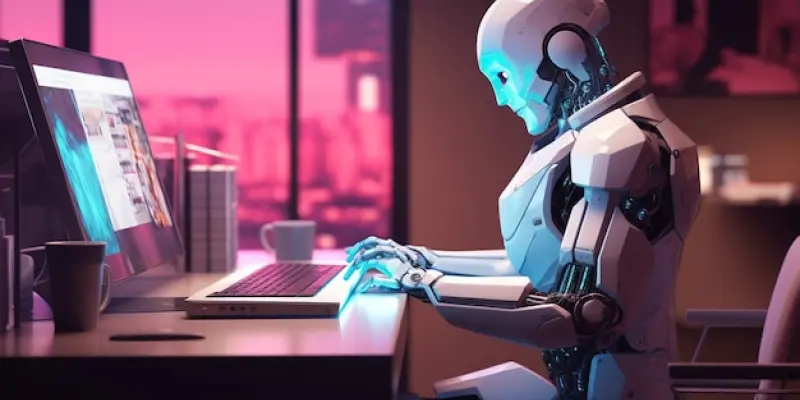In the evolving landscape of technology, No-Code AI platforms have emerged as a groundbreaking force in software development. By enabling users to create AI models using visual tools and drag-and-drop interfaces, these platforms eliminate the need for in-depth programming knowledge. Tools such as Bubble, Peltarion, Microsoft Power Platform, Runway ML, and Levity AI have democratized access to AI, allowing even non-technical users to build sophisticated applications quickly and efficiently. This paradigm shift raises the question of whether No-Code AI can replace traditional developers or if it merely complements their expertise.
Benefits for Businesses
The rise of No-Code AI has brought numerous advantages for businesses, significantly influencing their operations and product development processes. One of the most notable benefits is the significant reduction in time to market. A study by McKinsey in 2024 revealed that companies using no-code tools experienced a 40% decrease in the time required to launch products. This expedited pace allows businesses to stay competitive, respond to market demands faster, and seize new opportunities as they arise. Additionally, the lowered development costs associated with No-Code AI platforms make them an attractive option for organizations of all sizes. No-Code AI also enhances accessibility to artificial intelligence, empowering non-technical users to create and deploy AI models. This capability democratizes AI, enabling a broader range of individuals to innovate and contribute to the technology landscape. Furthermore, businesses benefit from the flexibility and ease of use that No-Code AI platforms offer. Entrepreneurs and small business owners can develop custom solutions without the need for extensive coding expertise, leveling the playing field and encouraging innovative solutions across various industries.
Limitations and Challenges
Despite its numerous advantages, No-Code AI is not without its limitations. One significant drawback is its inability to handle complex applications that require advanced programming skills. While No-Code platforms are suitable for straightforward projects, tasks such as backend development, system integration, and performance optimization still necessitate the expertise of skilled developers. These intricate requirements often go beyond the capabilities of drag-and-drop interfaces and visual tools.
Moreover, No-Code AI introduces challenges related to customization, security, scalability, and debugging. Limited customization options can restrict the functionality of AI models, preventing them from meeting specific user needs. Security risks are an inherent concern, as No-Code platforms may lack the robust security measures that custom-coded solutions provide. Additionally, scalability issues can arise when attempting to expand and enhance AI models built on No-Code platforms. Lastly, debugging can be a daunting task, as visual tools might not offer the same level of transparency and control as traditional coding methods.
Collaboration Between No-Code AI and Traditional Developers
As technology advances, collaboration between No-Code AI enthusiasts and traditional developers is becoming increasingly important. While No-Code tools simplify the development process for non-technical users, experienced developers remain essential for building large-scale systems, ensuring data security, and maintaining long-term code improvements. This synergy between No-Code platforms and traditional development practices is expected to drive significant progress in the software development industry.
By leveraging the strengths of both approaches, businesses can achieve a balanced and efficient workflow. No-Code AI can handle simpler aspects of development, enabling “citizen developers” to contribute to the creation of applications. This allows skilled developers to focus on more complex system architecture, performance optimization, and security measures. As a result, organizations can maximize their resources and foster innovation across different levels of expertise.
Future Implications and Conclusion
In today’s tech landscape, No-Code AI platforms have revolutionized software development. These platforms empower users to create AI models with visual tools and drag-and-drop interfaces, making it unnecessary to have extensive programming skills. Solutions like Bubble, Peltarion, Microsoft Power Platform, Runway ML, and Levity AI make AI technology accessible to a broader audience, enabling non-technical users to develop sophisticated applications quickly and easily. This widespread accessibility represents a significant paradigm shift, prompting discussions on whether No-Code AI has the potential to replace traditional developers or if it simply serves to enhance their capabilities. While these tools have made AI development more accessible, they are often seen as complementary to the skills and expertise of seasoned developers, who bring a depth of knowledge and experience that is still vital in more complex projects. The integration of No-Code AI into various industries raises interesting questions about the future of software development and the evolving roles of technologists.

